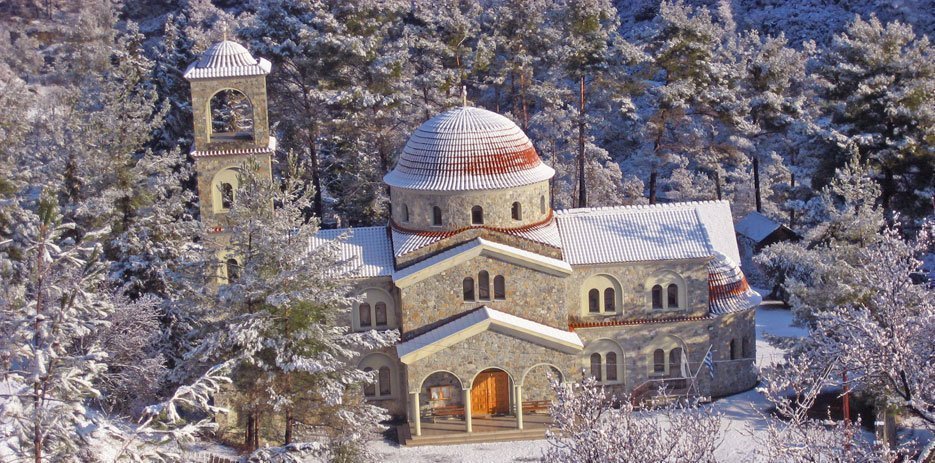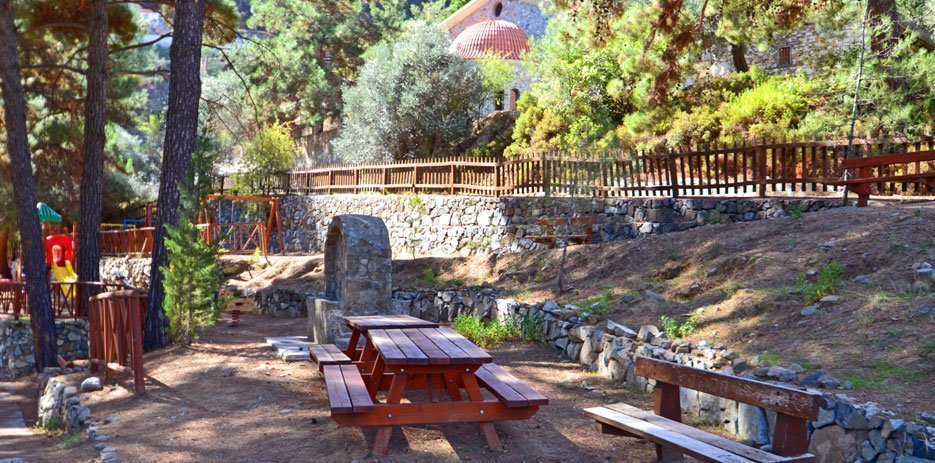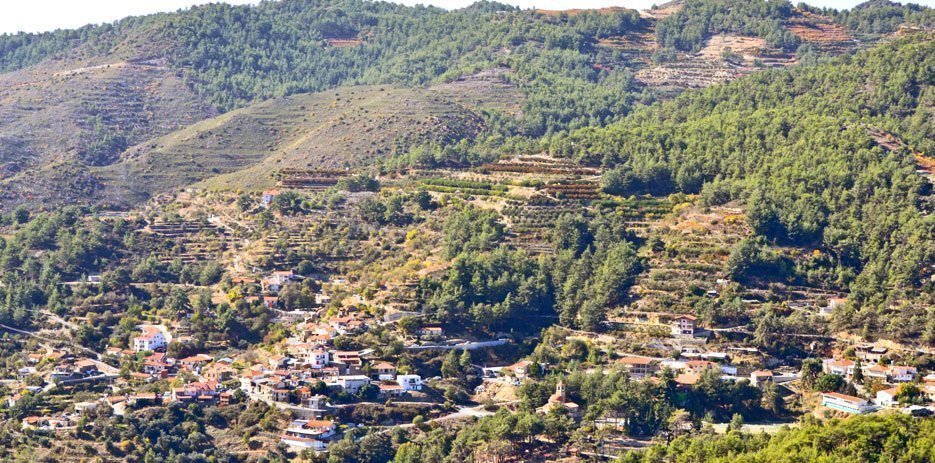Dymes is a small village in the mountainous region of Limassol and is at the heart of the “Pitsilia” region, between the villages of Kyperounta, Pelendri and Agros, at a distance of 59 kilometres from Nicosia and 40 kilometres from Limassol.
Dymes are built at an average altitude of 960 meters above the sea level and receive an average annual rainfall of about 750 millimetres. Mainly vines for winemaking varieties, vegetables, and fruit-trees are cultivated in the village’s region. The village of Dymes is known for its apple production, which is ranked amongst the best varieties of Cyprus. A few olive, carob, almond, and walnut trees are also cultivated.
The village has gone through great fluctuations of its population. Its inhabitants in 1881 were 102, increasing to 131 in 1891, to 154 in 1901, and to 177 in 1911. In 1921 they decreased to 167, then increasing to 184 in 1931, to 321 in 1946, to 373 in 1960, and to 391 in 1973. However, afterwards the population started presenting a continuous decrease and as a result the inhabitants in 1976 were 347 and decreased to 230 in 1982. In the 2001 census the inhabitants were 164.
The villages is included in the Plans for Uniform Agricultural Development of Pitsilia and has benefited from them through the improvement of rural roads, the construction of land reclamation projects, the excavation of a (water) drilling, and the expansion of irrigation to 176 “skales” (plural, 14400 sq. ft.) in the north of the village.
The traditional houses, the ascending roads, the irregular terrain, the vine-arbours, the small yards with the tall fences, the tiled and tin roofs of the houses, and the picturesque upper-floors compose the basic image of the village. The houses, most of them made with local stone, are -to a great degree -in harmony with the natural environment.
The village’s church, dedicated to John the Baptist, was built in 1861. Some researcher mentions that he saw in this church an icon of the Blessed Virgin Mary that he dated back to the 17 th century and it was said to him that it came from a ruined country church in the region.
Education started in the village in 1863 with the priest Nicolas Ioannou as a teacher, giving lessons in his HOME and receiving aid from the children in the cultivation of his estates and in pasturage as a reward.
Later on the children attended a private school -in the neighbouring village of Potamitissa -until 1887 when the first regular community school operated at the village of Dymes.
It is believed that Dymes took their name from the ancient city of Achaia -Dymi – HOME of Kifeas, one of the leaders of the first Greek colonists that settled in Cyprus around 1200 BC.


NATURE TRAIL
‘DYMES – PELENDRI’
The admirer of the Nature Trail encounters wild vegetation and a rich animal life. The nature path has a length of about 4.5 kilometres. It is situated at an altihide of about 900 to 1050 metres.
Long time ago, this path was connecting the two communities, Dymes and Pelendri. Gradually the path became impassable because of the dense vegetation. The Community Council of Dymes and the Pelendri Hunters club ‘Panther’ took the initiative and decided to re-construct this unique nature and beauty path. We express our gratitude to the Pelendri Community Council for its assistance.
The project was funded 80% by the European Union under the common Agricultures Plan 2004-2006 of the Forest Department.
The visitor touring the Nature trail. During his walk will enjoy the rich vegetation of the area, as well as the dense pine forest. He can have a rest at various Rest points with breathtaking views and take pictures of the Lovely Cyprus nature and countryside.
In addition we will encounter plantations with fruit trees, like apple-trees, peach-trees, almond-trees, walnut-trees, a fountain with portable water, but also a location called ‘Deisi’, known locally as the ‘little Throne of Virgin Mary’.
It is worth mentioning, that in the past the habitants of the surrounding villages used to walk in procession with her icon in a reverent way to that location , where they prayed and then had a village feast.
During his walk the visitor will see the consequences of the destructive fire on the 6th of August 2007 which resulted to the devastation of a great part of the path and particularly four kilometers of forest and wild vegetation.
The cause of the fire was again human negligence and carelessness. The path which was once full of colors and sweet scented flowers is now covered with a mournful veil which emphasizes the importance of protection of Cyprus forests from the nightmare of fires and the necessity of acquiring environmental conscience.
Visitors with special interests may study species of flora, fauna as well as the geology of the area.
Visitors should bear in mind the following:
Kindling of fires is totally banned.
Don’t smoke and don’t litter the path.
Don’t pick wild flowers or plants and don’t carve the tree trunks
Don’t disturb the animal life on the path
Don’t damage the structures
Use of bicycles and motor-cycles is forbidden.
In case you notice a fire call immediately number 1407 (24 hours a day)

Courtesy of the Community Council of Dymes






